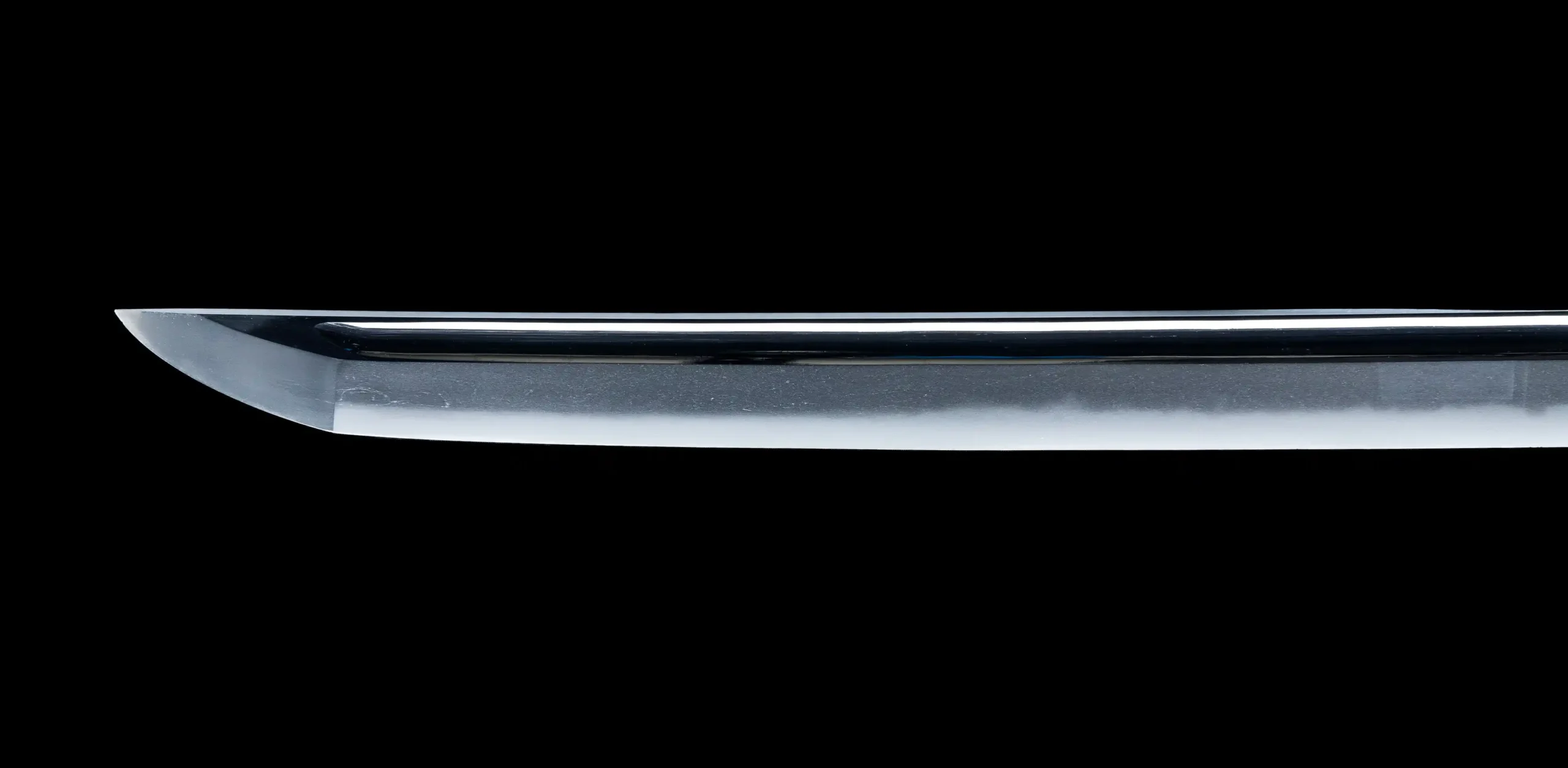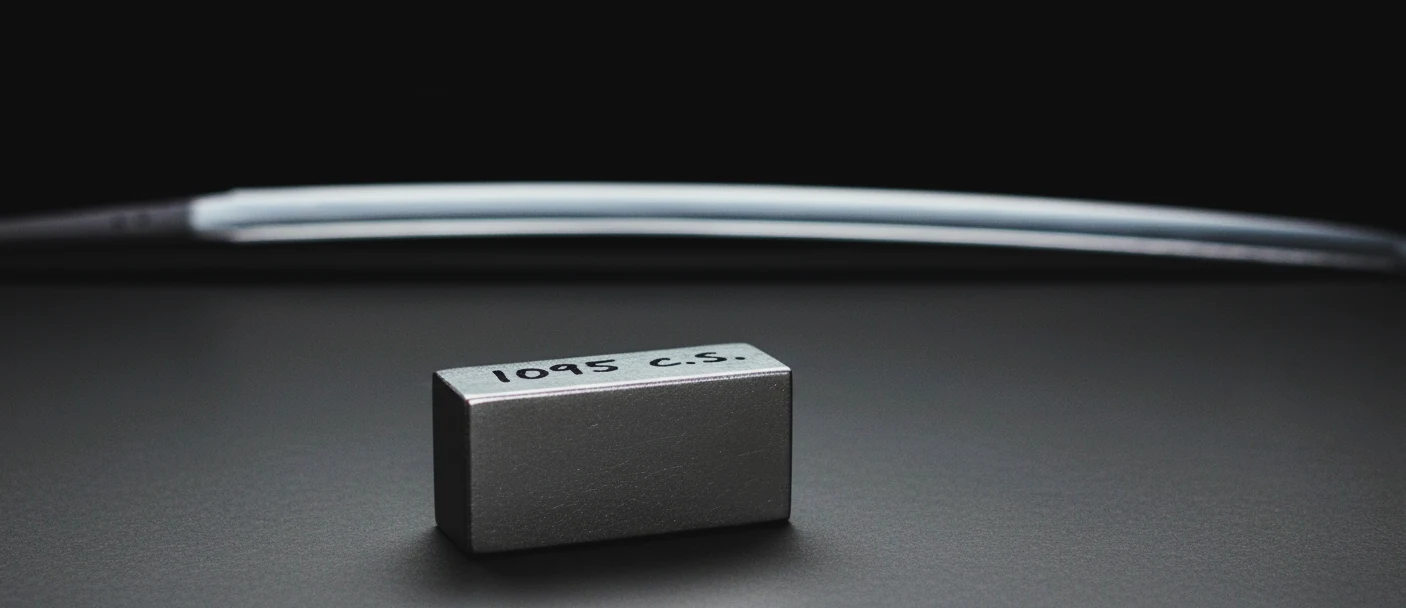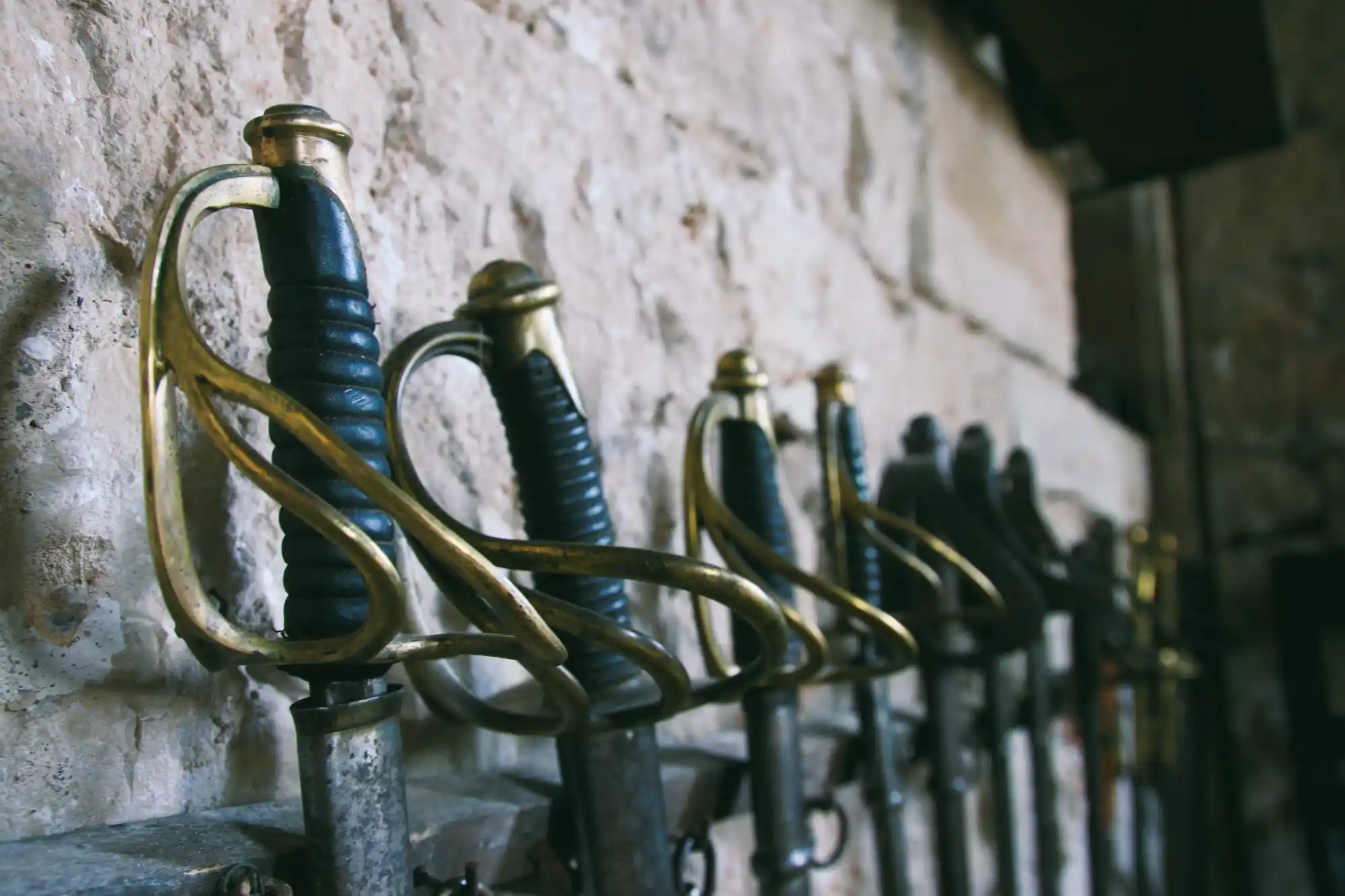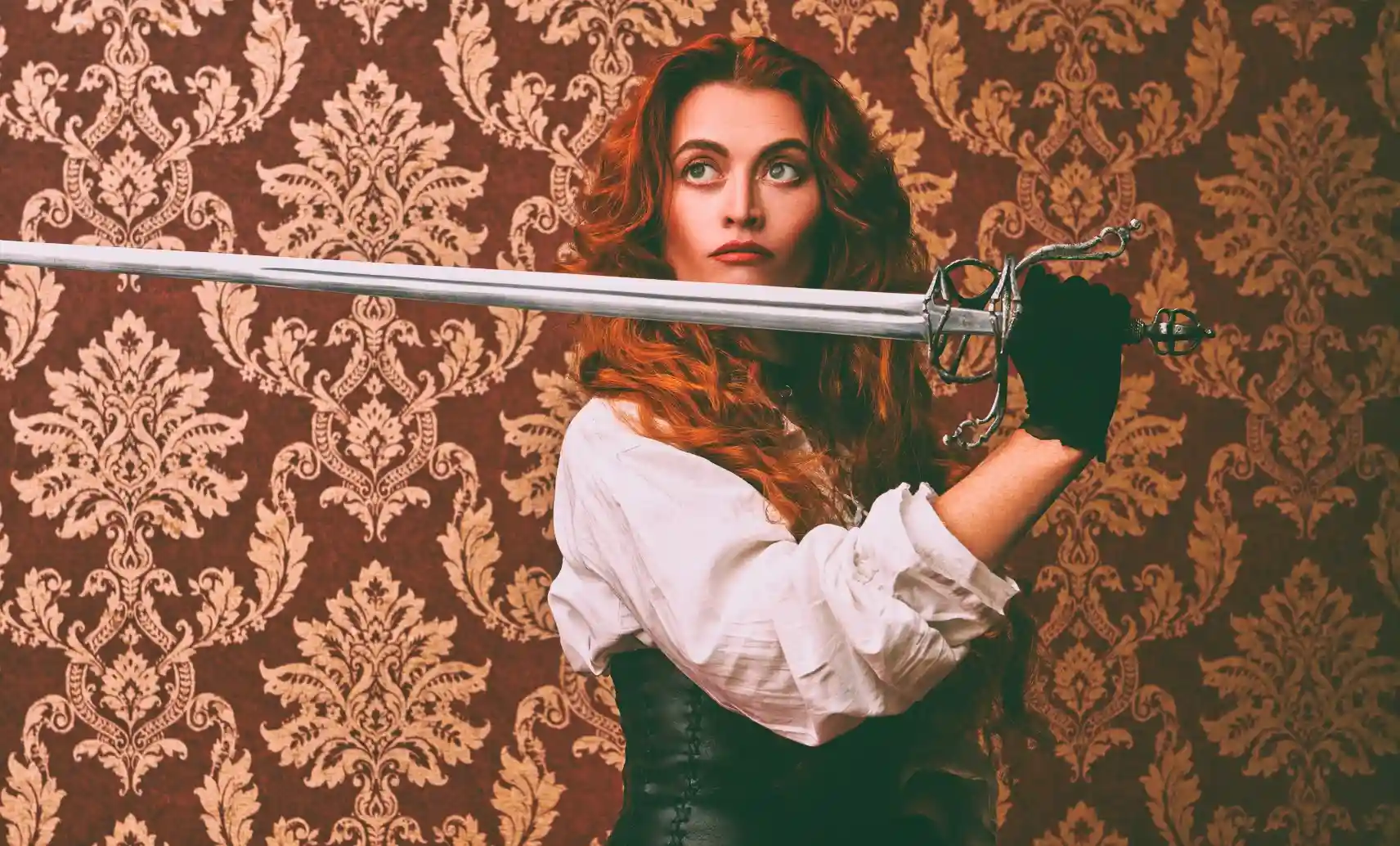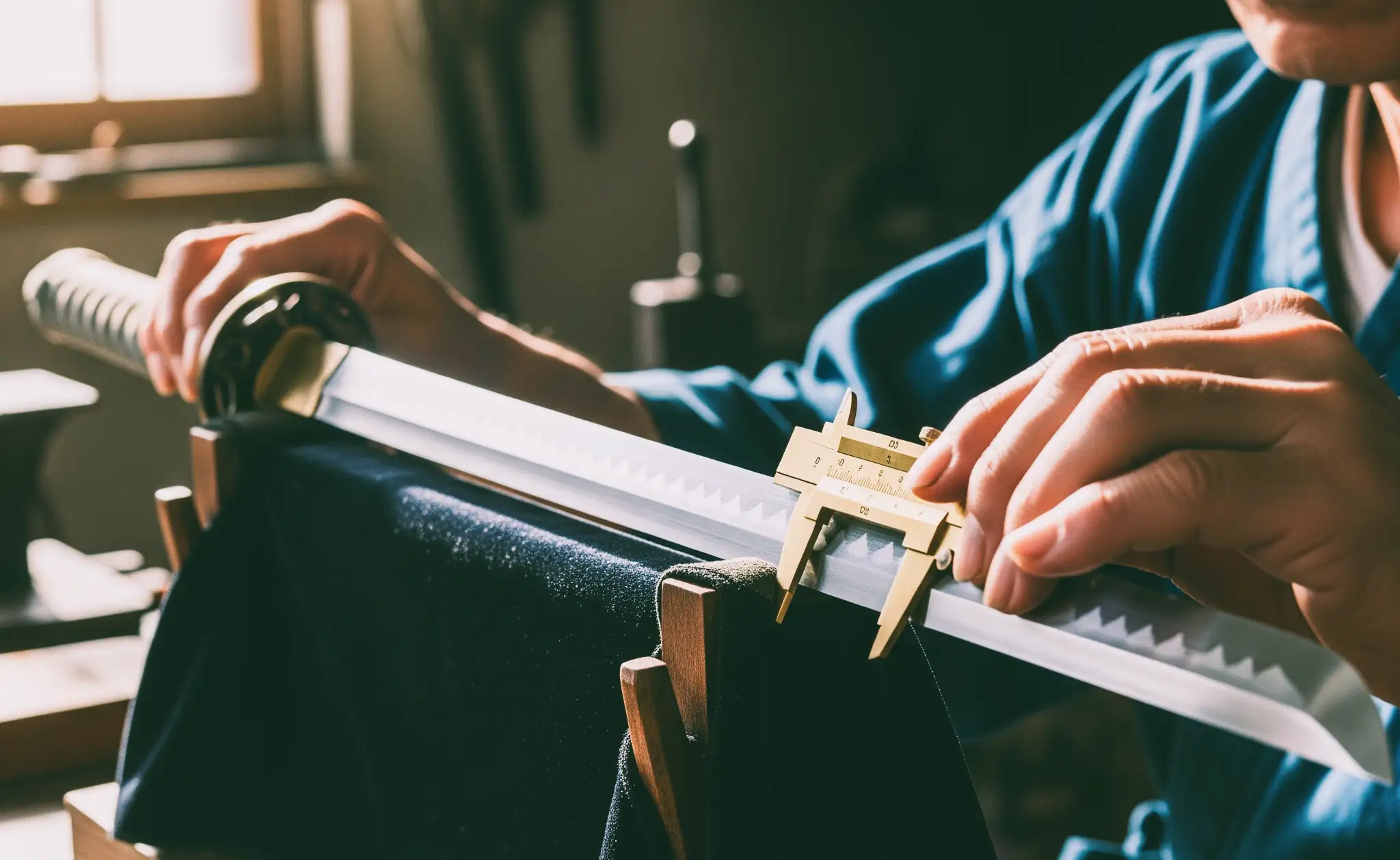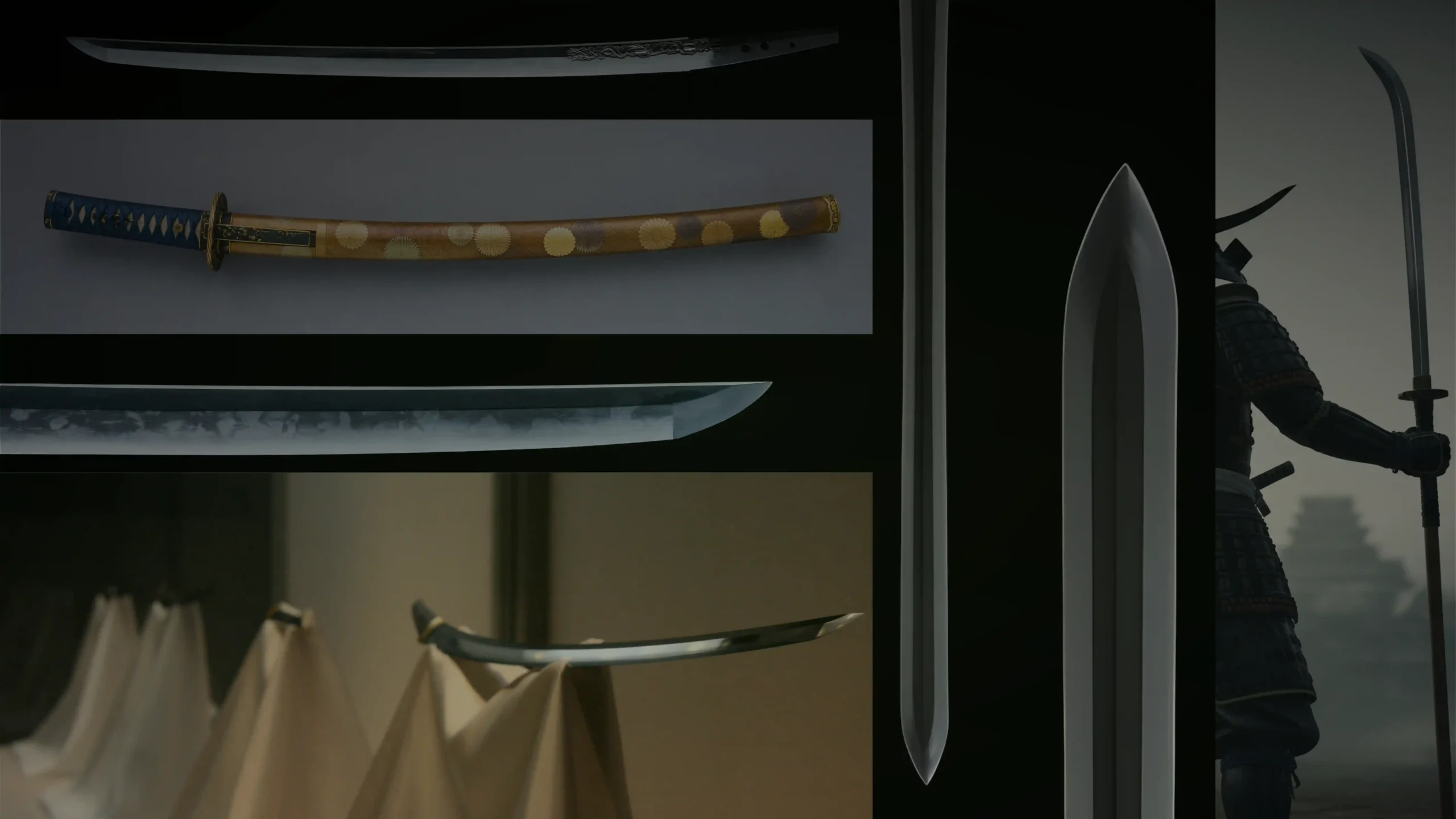We may earn revenue from the products available on this page and participate in affiliate programs. Learn more >
The bastard sword is a European sword used during the late Middle Ages, known for its versatility. What made this type stand out was that it didn’t belong fully to either the one-handed or two-handed sword category. In this guide, we’ll explain everything you need to know about this European sword, from its form and function to the role it played in history.
| Origin | Europe |
| Period | Late Middle Ages (14th to 15th centuries) |
| Total Length | (40 to 51 inch) 101-130 cm |
| Handle Length | (6-10 inch) 15-25 cm |
| Blade Length | (30 to 41 inch) 75-104 cm |
| Weight | 1.3 to 1.8 kilograms |
| Handle | Hand-and-a-half grip |
| Usage | Cutting and thrusting |
What is a Bastard Sword?
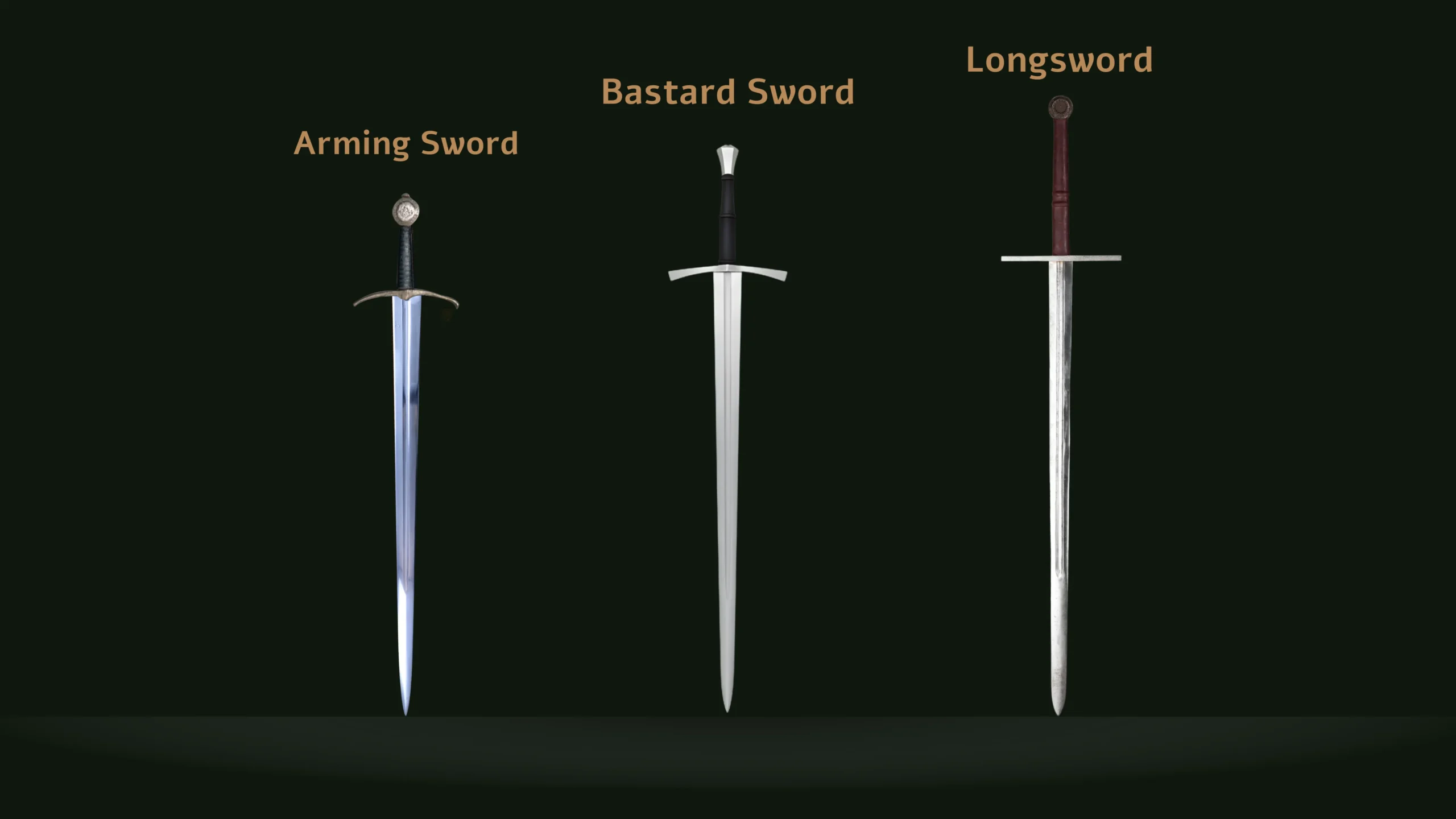
At its core, the bastard sword is a medieval weapon distinguished by its position between the standard one-handed arming sword and the larger two-handed longsword. Key to its definition are its longer blade and a handle extended enough to accommodate either one or two hands.
Why Is It Called a Bastard Sword?
The term “Bastard Sword” is the oldest known historical moniker applied to this class of weapon, appearing primarily in the 15th or 16th century. The name originates from the French term épée bâtarde. The literal translation of bâtarde is “bastard,” denoting something of mixed or uncertain origin. This designation was applied because the sword functionally defied simple categorization: it was neither a pure one-handed arming sword nor a fully dedicated two-handed sword (longsword).
Blade Characteristics
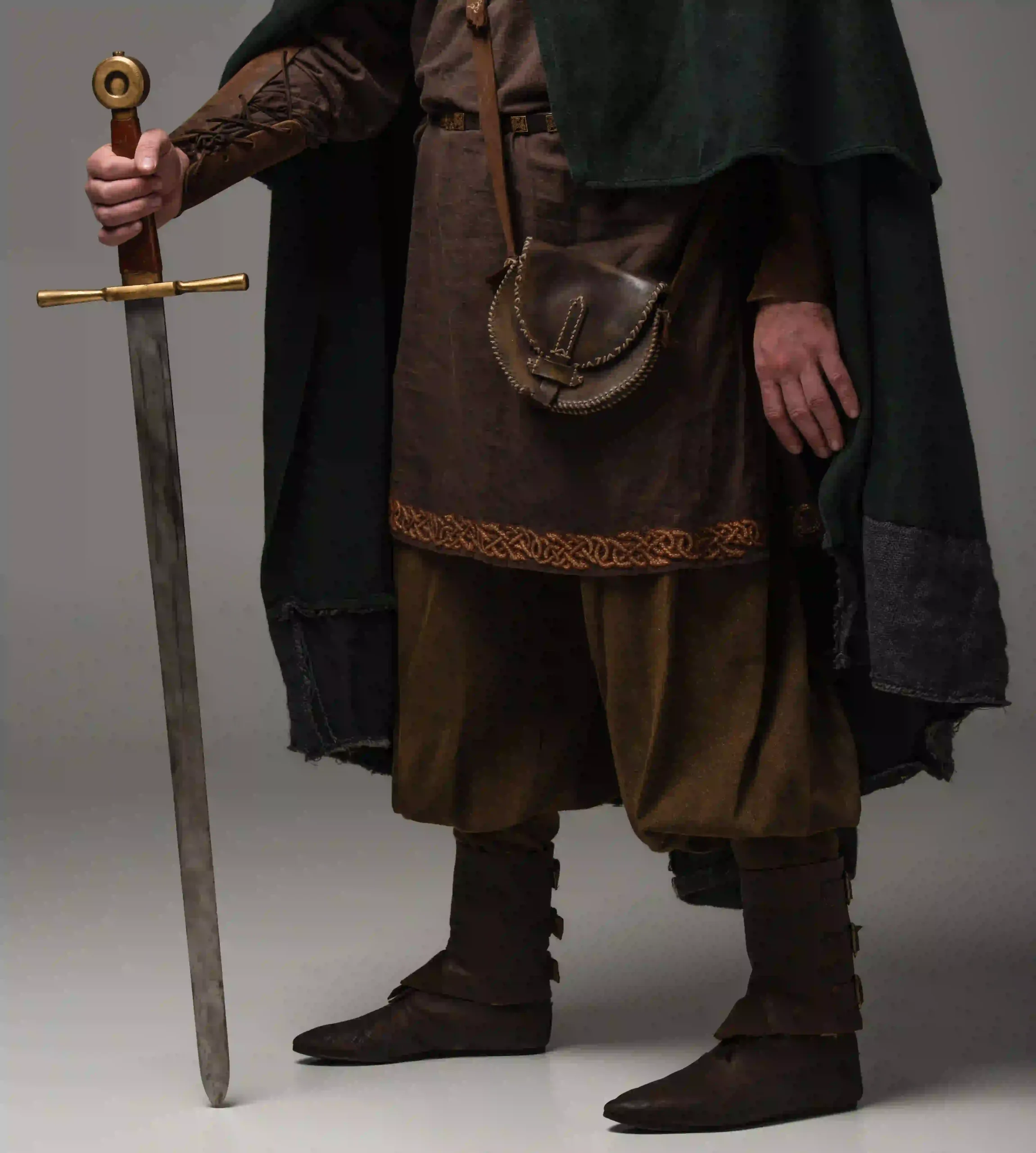
Bastard swords feature a straight, double edged blade that is longer than an arming sword but shorter than a longsword, usually ranging between 30 and 41 inches (around 75 to 104 cm) depending on the type. The blade shape also varies. Here are the most common designs based on Ewart Oakeshott’s categorization.
| Oakeshott Type | Defining Characteristics | Primary Function | Typical Period of Use |
| Type XV / XVa | Stiff, sharply tapering diamond cross-section, often narrow point. | Thrusting (Anti-Armor) | c. 1350 – c. 1500 |
| Type XVIIIb | Narrow blade, often hexagonal cross-section, long grip. | Balanced Cut and Thrust | c. 1450 – c. 1520 |
| Type XX | Hand-and-a-half grip, parallel edges, multiple fullers (sometimes two or more). | Versatile Cut and Thrust | 14th to 15th Century |
Hilt

Even though the name suggests a hand and a half grip, meaning one hand is fully gripping while the other is not, in practice the bastard sword is held with a full two handed grip without any space between the hands. One hand is touching the guard while the other touches the pommel, as shown in the image above. In comparison, when holding a longsword, one hand is near the guard while the other is attached to the pommel, leaving a notable space in between.
Bastard Sword Weight
These types of swords usually weigh between 1300 and 1800 grams. Some examples from the met museum collection weigh 1560 g, 1326 g, and 1616 g, according to the measurements shown on the museum’s official records.
The Genesis of the “Hand-and-a-Half Sword” Designation
In contrast to the historical épée bâtarde, the designation “Hand-and-a-Half Sword” is a relatively modern invention, introduced toward the late 19th century. This term is purely descriptive, created by antiquarians and later popularized by enthusiasts and practitioners to capture the sword’s defining ergonomic feature. Today, we use both terms to describe the same type of sword.
Historical Background
The bastard sword emerged in the late Middle Ages, with its development gaining momentum around the 14th century and reaching its zenith during the 16th centuries. This period coincided with significant shifts in warfare and, crucially, advancements in armor technology. As knights and other warriors increasingly adopted more effective plate armor, traditional one-handed swords, often used in conjunction with shields, proved less effective against such defenses.
The bastard sword arose as a direct response to this challenge, offering a versatile weapon capable of delivering more powerful blows and targeting the vulnerabilities in improved armor. Its development was not a sudden innovation but rather the culmination of a gradual evolution in European sword design. Its precursors can be traced back to earlier sword types.
The Roman spatha, a long, double-edged sword used by the late Roman cavalry, laid a foundational influence. The Viking sword of the early Middle Ages, also contributed to later European sword designs. The knight’s sword of the High Middle Ages, already longer than earlier types, formed a more direct antecedent to the bastard sword.
Advantages in Combat
The primary advantage of the bastard sword lay in its versatility in combat, allowing a skilled wielder to adapt their fighting style to many different situations. Many types had a steeply pointed and narrow blade, which made the sword lighter than broader versions while keeping strong cutting ability and excellent thrusting performance. In combat, it was fast and offered good reach.

One of the key advantages for a soldier was the ability to use a shield in the free hand, making it easier to block enemy attacks and strike at the same time. When the shield was dropped, fighters often switched to a full two handed grip, using the sword to block, deflect, and deliver counterattacks, or to draw a backup weapon such as a knife or dagger.
When it comes to balance and versatility, the bastard sword stands among the most effective types in history. To put it in perspective, katanas were excellent for cutting but less effective for thrusting. Rapiers had great reach for a one handed sword type but were poor at cutting. Longswords were versatile but heavier. Sabres were fast and good for both cutting and thrusting, but also limited against armor.
This combination of control, reach, and adaptability made the bastard sword one of the most capable and well rounded weapons ever made.
Variations and Regional Differences
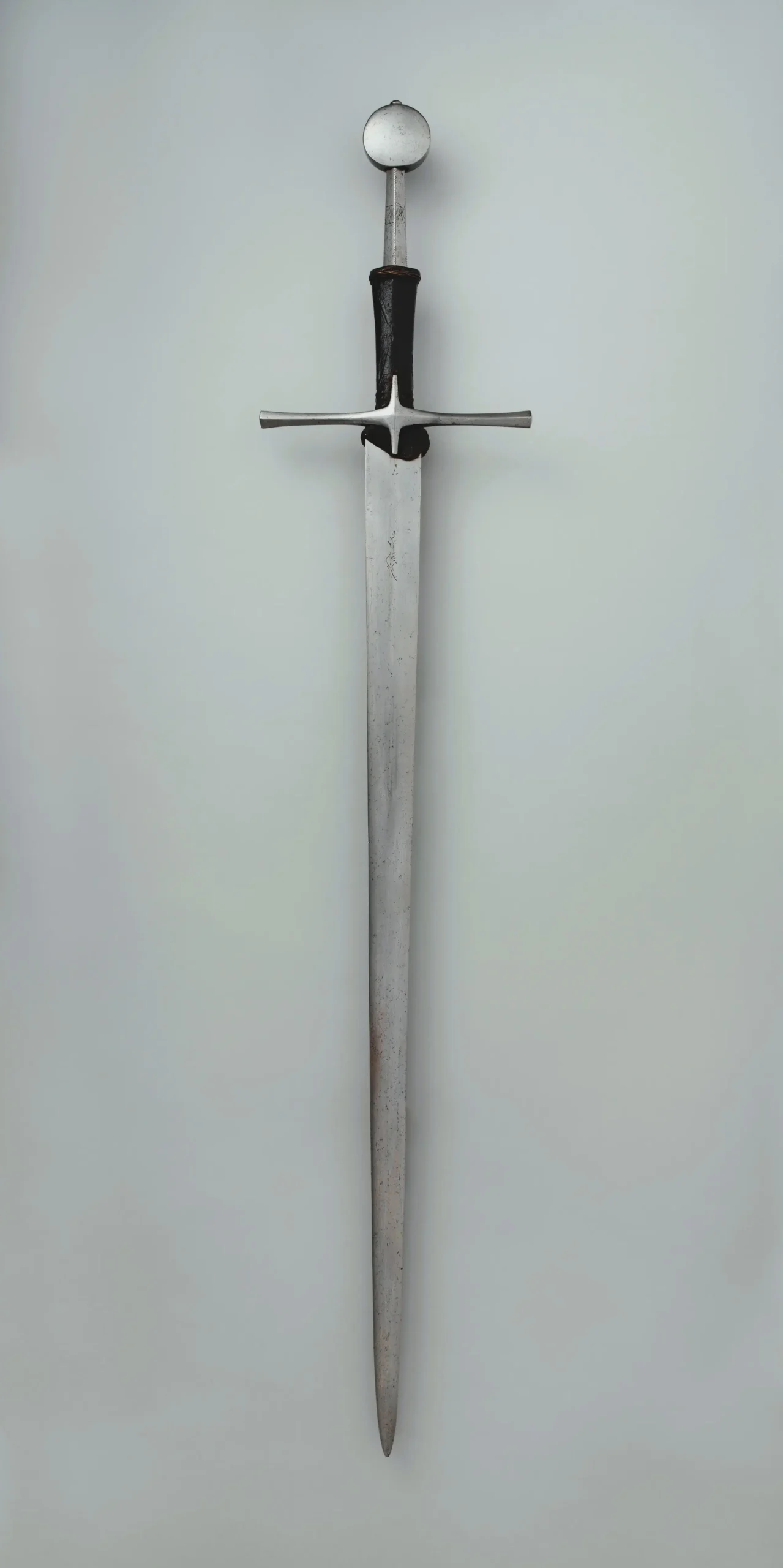
These swords were popular across Germany, England, France, and Italy. However, it is difficult to tell which country a certain type belongs to. This means there are not many clear regional differences or unique characteristics that let you say, for example, this sword is Italian.
Many swords changed hands in battles, which makes it even harder to link a type to a single region. Even though we cannot classify bastard swords based on country or region, they evolved in a similar way across Europe. That is why Oakeshott’s typology is a better way to understand their types and variations. You can see this in the table above.
The Bastard Sword in Martial Arts
The bastard sword was not just a battlefield weapon. It also played an important role in European martial arts, especially in the schools of swordsmanship that developed in the late Middle Ages and Renaissance. Because it could be used with one or two hands, it allowed fighters to practice a wide variety of techniques.
Martial arts manuals from Germany and Italy, like the German Fechtbücher and Italian fencing treatises, often include instructions specifically for the hand-and-a-half sword. These manuals show how to shift between one-handed use with a shield and two-handed grips for more powerful strikes or better control.
Since the bastard sword is essentially a subcategory of the longsword, modern HEMA practice treats it within the broader framework of longsword techniques, drawing particularly from traditions like Liechtenauer and Fiore de’ Liberi. However, the ergonomic differences present specific challenges in training. Practitioners accustomed to a full Longsword grip experience difficulties when using a shorter Bastard Sword grip.
Advanced two-handed techniques, such as Winding (the rotational maneuvering used to maintain control in a bind), become substantially harder. The short handle restricts wrist movement and necessitates significant adaptation to prevent wrist collision.
Modern Interpretations and Reproductions
Today, the bastard sword continues to capture the interest of collectors, martial artists, and historical enthusiasts. Modern reproductions are made for different purposes, including historical reenactment, HEMA (Historical European Martial Arts) practice, stage combat, and display. Reproductions vary a lot in quality and materials. Some are made for safe practice, with blunted edges and flexible blades, while others try to match the weight, balance, and appearance of historical originals as closely as possible.
There are also quite a few swords sold as bastards that aren’t really balanced or made with the right lengths, so you need to be careful when picking one. If you are thinking about adding a bastard sword to your collection, we recommend checking our article here, where we list the best bastard swords currently available on the market.
Last Words
The bastard sword was a versatile weapon in the Middle Ages, able to be used with one or two hands depending on the situation. It was practical in combat, useful both for attacking and defending, and could adapt to different fighting styles. Its design changed over time, with variations in blade shape, length, and guards, but the basic concept stayed the same. Even today, it is appreciated by historians, martial artists, and collectors for its role in European swordsmanship and its wide use across the continent.
FAQ
What is the difference between a bastard sword and a longsword?
The main difference between a bastard sword and a longsword is that bastard swords feature a slightly shorter blade and hilt, which makes them more suitable and balanced for one-handed use. Read more in-depth: Bastard sword vs Longsword
How heavy were Bastard swords?
These types of swords usually weigh between 1300 and 1800 grams.
Were bastard swords effective?
Yes, bastard swords were very effective. They offered a great mix of speed, control, and striking power, making them useful in many combat situations. Their design allowed both one-handed and two-handed use, so a fighter could switch between carrying a shield or using both hands for stronger attacks and better defense.
Can bastard swords be dual wielded?
Even though bastard swords are not meant to be dual wielded, if both swords are well balanced, they can 100% be effective in the hands of a skilled fighter. However, if the scene you are imagining is like the sword fighting scene where Arthur Dayne uses both of his bastard swords against Ned Stark, you are wrong.
What makes a sword a bastard sword?
The most important feature that makes a sword a bastard sword is its handle.


